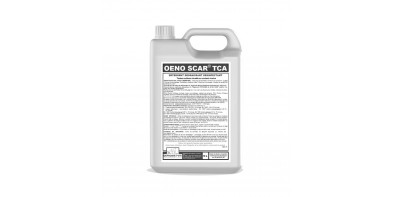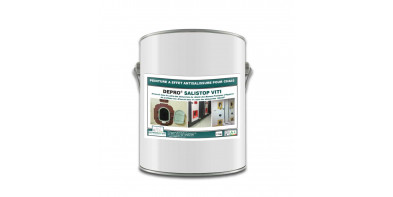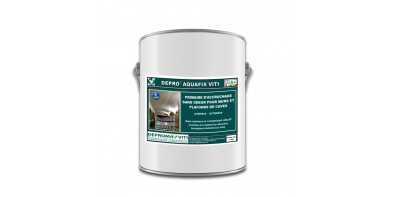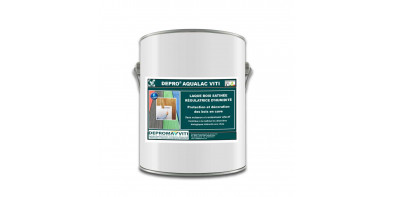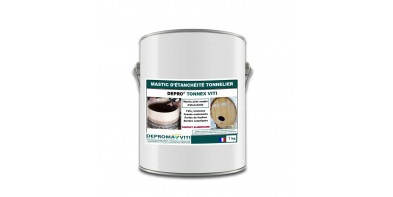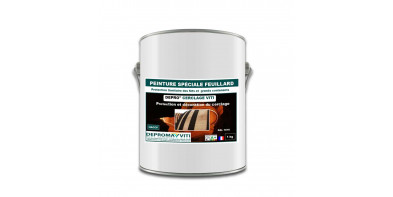Treatment, protection and decoration of wood in the cellars.
What you need to know about wood treatment and preservation products in wine buildings.
Organoleptic contamination of wines in tanks and cellars is a major threat to all wine-producing companies. This pollution most often results in a smell and taste of cork or mouldy wine. In a few years, it has caused the loss of hundreds of thousands of hectolitres and has affected the most prestigious vintages in all wine-growing regions.
First of all, wood likely to come into contact or intended to come into contact with wines must not have been preserved.
With regard to wooden elements in the premises, particular attention must be paid above all to any introduction of wooden materials: frames, doors, stairs, windows, parquet floors, wooden frames, pallet boxes...
Prohibit the entry of wood whose origin or treatments are not known. Do not allow polychlorophenol and polybromophenol treated wood to enter at any stage (frame, pallet). Some of these products are toxic in high doses. In addition, they can be transformed by moulds into malodorous anisole derivatives at very low doses (a few ng/L: a nanogram is a billionth of a gram, 10-9 g) Contagion is caused by the atmosphere and spreads to everything: tanks, barrels, soil surfaces. The wine is contaminated by polluted air when it is racked from one tank to another, when bottled or simply stored in porous containers such as wooden barrels.
If it is impossible to eradicate from the winery all materials that may one day become contaminants, every effort must be made to prevent the development of TCA :
- avoid containment by regular ventilation,
- ensure that the humidity of the air does not exceed 75%,
- store products intended to come into contact with wine in a healthy environment,
- replace pall-boxes and wooden pallets with metal pall-boxes,
- isolate pallets, boxes and wooden crates from premises where wine is stored in bulk
- maintain appropriate hygiene in the premises, clean, disinfect and repaint walls, tanks and floors regularly.
In any case, it is essential to ventilate, to maintain suitable pollutant levels (less than 10 nanograms / gram).
During the off-seasons (autumn and spring), it is relatively easy to renew the fresh air, as the temperature differences with the inside of the cellar are not high.
In both winter and summer, it is less easy to ventilate the cellar with the aim of keeping it at an ideal temperature of 12°C to 15°C. Without totally replacing ventilation, there are complementary processes for decontaminating the air in the cellars. This process consists of filtering the air through activated carbon, coupled with a photocatalysis mechanism.
An efficient and sustainable treatment of raw wood and all joinery in wine-growing environments (wine-making, bottling, barrel cellars) requires the use of a specific product, insecticide and fungicide (moulds and fungi). If the work is carried out by the winegrower, the product used must have a "General Public" Marketing Authorization. The product used must, if possible, benefit from a certificate of use in a wine-growing environment.
Processing mode : The treatment is mainly carried out by surface application (brushing, spraying). The effect of the treatment is immediate and optimal from the fixing stage.
The appearance of the wood is not affected by the treatment and remains compatible with all types of finishes (varnishes or stains).
Preventive treatment: Application by brushing on embedded parts, assemblies and supports. Use: 10 m²/l (in 1 coat) for the treatment of softwoods and hardwoods in use classes* 1, 2 and softwoods in use class 3A.
5 m²/l (in 2 coats) for the treatment of hardwoods in use class 3A.
Curative treatment : Application by injection (to be carried out by an applicator) then spraying at low pressure or brushing (2 to 3 passes, time between each pass: 15-30 min) with emphasis on the recessed parts, assemblies and supports. Before applying the product, it is necessary to carry out the minimum operations of drilling, logging, pickling (if there are finishes), brushing, and dusting for both solid and glued laminated wood. All infested wood, which no longer has any resistance, must be dismantled and replaced. Deep injection on parts with large cross-sections (rafters, bastaings, etc.) can be carried out by repeated filling of the holes, or by an appropriate device under low pressure. Deep treatment must be carried out on the attacked areas, but also by extending beyond both sides of this area. Consumption: 3,3 m²/l (en 3 coats).
Consumption varies according to species, sections and application method. Drying-Fixing at 20°C: 24 to 48 hours in a ventilated atmosphere (depending on the nature of the wood, its absorption capacity and atmospheric conditions).
Notes : Outdoor, cover with a stain, varnish or paint (DEPRO® LAZUREX GEL VITI) or a painting (DEPRO® SALISTOP VITI).
Do not work in wet weather.
To facilitate drying, provide adequate ventilation at the treatment site.
The moisture content of the wood at the time of treatment must be <25 --25--="">
Do not treat frozen wood.
Do not apply the product to wood that may come into contact with foodstuffs. Pre-test exotic or tannin-rich woods.
The ends and cuts must be treated to ensure the effectiveness of the treatment.
Reprocess wood in case of sanding, cutting, etc. Cleaning of equipment : Rinse materials and equipment (not dried product) with water.
*Class 1: Class 1 includes dry wood for indoor use with a moisture content always below 20%. These are woods used for interior joinery or areas protected from humidity.
Class 2 :Class 2 includes dry wood that may occasionally come into contact with a moisture content above 20%, such as frames and structures.
Class 3:Class 3 includes wood that can be in frequent contact with moisture, even above 20%. This type of wood is used for many construction parts as well as external joinery such as cladding.
